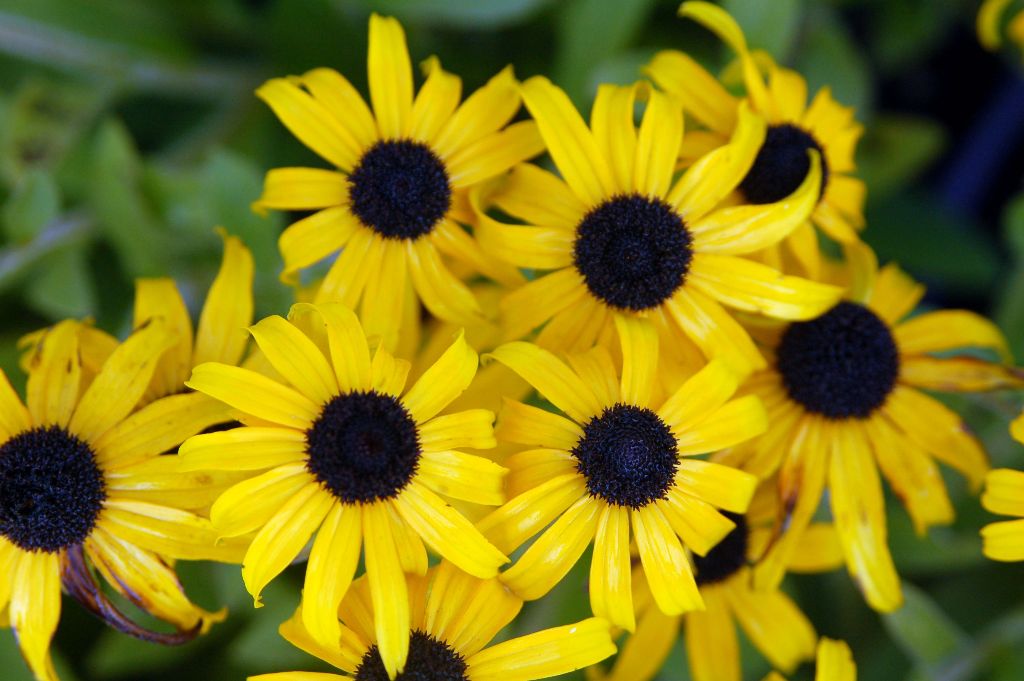How to Grow and Care for Black Eyed Susans Flower

The Black-eyed Susans belong to the sunflower family. They are also called to be members of the aster family and can trace its origin around North America. They have an attractive bright yellow color that contrasts perfectly with brownish-black color, hence the name. Although they are related to sunflowers, they also show great similarity in appearance to daisies. Black-eyed Susans are often also termed as coneflowers. This is because their head gains the shape of a cone. The most salient feature that they possess is their nature of being carefree.
The Black-eyed Susans have their height depending on the conditions it has been raised. Their height can grow up to 3 ft, tall. Their leaves can be as long as 6 inches with stalks of about 5 inches. When it comes to the flower, Black-eyed Susans can have flowers with a radius of 1/1.5 inch long.

Suitable Season
When it comes to planting the Black-eyed Susans, the best time to plant is during fall or early spring. As for the soil, 70F is considered to be the most appropriate temperature for seed germination, which can take a week or even a whole month. Usually, when these are planted from March to May, they start to give out flowers around June to September.
Soil and Watering Needs
Black-eyed Susans prefer that their seeds are planted in soils that are not only moist but also drained properly. They prefer to be sown in loosely covered soil. Their carefree nature shows in their quality of being able to tolerate under tough conditions. Although, they would rather tolerate drought than tolerate wet feet in soggy ground conditions. Until the time Black-eyed Susans have established, it is recommended to keep watering them regularly and thoroughly so that the soil stays moist. Once established, there is not much to worry about.
Preference of Light
These beautiful flowers love it sunny. Hence, it is highly recommended to grow them in areas that provide full and direct sun. Although they will grow best in the sun, even if grown in partial sun, they will thrive. Black-eyed Susans are low maintenance perennials. They only need to be taken care of and watered when it is establishing. Otherwise, even if a very low amount of attention is given to them, these plants can survive easily. Although, once in a while, make sure they are not completely dried out. Whenever they are watered, it is recommended that they are watered at their soil level and not watered from above as they are not a big fan of water staying on their foliage, resulting in powdery mildew.
Method for Fertilization
For fertilizing the Black-eyed Susans, they prefer to be fertilized once or twice a year with the method of slow-release. Adding to their carefree nature and low maintenance, they do not require fertilizers at all. The wilder the species is the fewer fertilizers matter. Although, they like it when additional organic matter is included in their soil. One thing that the Black-eyed Susans hate is overfertilization. This will harm the growth of the plant and cause the flower stems from growing weak.
Division
Due to the creeping root system, Black-eyed Susans develop a habit of spreading widely and even covering up the space of other plants. To make sure that this spreading is kept under control and no harm is done by overspreading, dividing them regularly before the new growth comes, is the best option. While dividing, the roots should be cared for and not be cut. The division must take place every 4-5 years.
Pests and Diseases
Even though Black-eyed Susans do not require constant care, they should be looked after when it comes to pests and diseases. Even though it attracts butterflies that not only enhance the look of your garden but also helps in pollination, it also attracts various pests. Primarily, Black-eyed Susans often become prey to cabbage worms. Other than that, their bright color also attracts deer. But, that would not cause it much harm as its bitter taste shoos them away. They are also prone to getting powdery mildew, rust, and leaf spots.
Other Details
The Black-eyed Susans will change the whole look of your garden with their enticing foliage that attracts the eye immediately. It loves the company of fall-blooming asters and giant hyssop. This beautiful plant is a great symbolizer of Justice.
The Black-eyed Susans have their name commonly called due to their center having a brownish-black color, giving the appearance of an eye. They are also called Rudbeckia Hirta scientifically. It can also be called brown betty, gloriosa daisy, golden Jerusalem.
The Black-eyed Susans are not considered to be poisonous for all animals. However, they are considered to be poisonous in a mild range for cattle. They can be proven harmful to household pets and hence should be kept away from. They should also not be close to children who may try to eat it.
The Black-eyed Susans may die if they catch the disease of leaf spots. This disease is fungal. This may occur if they are kept in a very warm or humid climate. If they are given proper attention and care, they will not be affected often.





